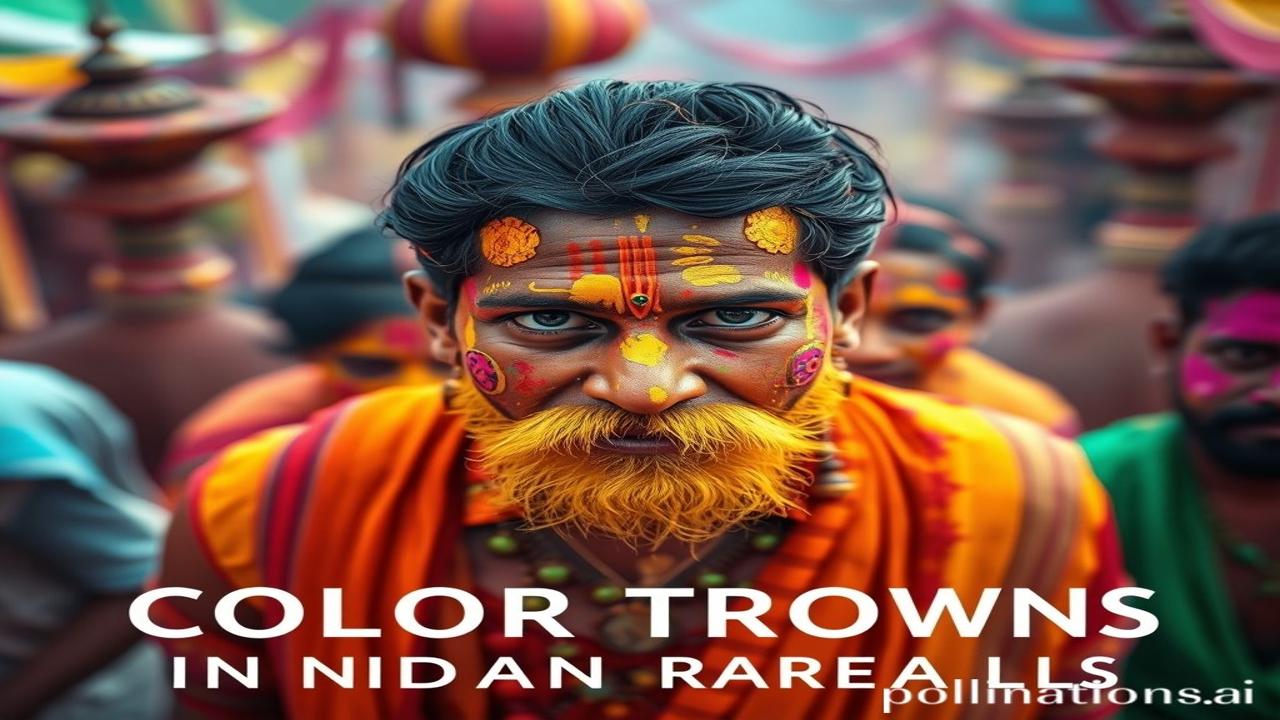Rang De Basanti: Decoding the Color Traditions of Indian Festivals
Kabhi socha hai, jab hum Holi khelte hain, toh sirf rang nahi, ek puraana itihaas aur sanskriti bhi apne gale lagate hain? Waqt ki dhool mein chhupi hui hai yeh kahani, jismein har rang ka apna ek matlab hai, apna ek gehra raaz. Aao, hum is rang birangi yatra par chalein!
India’s Canvas: A Historical and Cultural Tapestry
Color, in Indian festivals, isn’t just about aesthetics; it’s about bhavna (emotion), shraddha (faith), and itihas (history). From the vibrant hues of Holi to the auspicious reds of weddings and the serene whites of mourning, colors are deeply woven into the fabric of our culture.
This tradition has roots stretching back millennia. The earliest evidence comes from the Vedic period (circa 1500-500 BCE), where references to dyes and pigments used in rituals and ceremonies are found. But the real explosion of color occurred during the classical period (circa 320 BCE – 550 CE), particularly with the rise of Hinduism, Buddhism, and Jainism.
Think about it: the elaborate murals of Ajanta and Ellora, the brightly painted idols of deities, the intricate designs of textiles – all speak to a sophisticated understanding and application of color. Each color was (and still is) associated with specific deities, emotions, and elements of nature. For example, saffron (Kesari) represents sacrifice, courage, and spirituality; green embodies fertility, new beginnings, and harvest; and blue is often associated with Lord Krishna and symbolizes the infinite.
But why? Because color communicates where words fail. It’s a language of the soul, a shorthand for complex ideas and emotions.
Zameeni Sach: People, Life, and the Palette of Existence
Imagine a bustling village during Holi, 500 years ago. Picture artisans painstakingly grinding natural pigments from flowers, roots, and spices. Turmeric for yellow, indigo for blue, henna for reddish-brown – each color a gift from Prakriti (Nature).
“Arre, Kaka, yeh gulal kitna sundar hai!” a young boy might exclaim, watching an elderly artisan mixing powdered flowers with sandalwood paste.
“Haan beta,” Kaka would reply, his hands stained with vibrant hues, “Yeh sirf rang nahi hai, yeh toh Ishwar ka ashirwad hai. Yeh prem, umeed, aur nayi shuruaat ka rang hai.”
Farmers would celebrate the harvest with dances adorned with green and yellow, representing the bounty of the land. Warriors would wear saffron-dyed robes, signifying their courage and readiness for sacrifice. Women, adorned in colorful saris, would sing folk songs, their voices echoing through the valleys.
Ma Rukmini ne aaj naye kapde pehne, kyunki mandir mein utsav tha. Lal rang ki sari, jo unke suhag ki nishani thi, aur haath mein mehendi, jo pyaar aur khushiyon se bhari thi.
Dharohar aur Pehchan: Echoes of the Past in Modern India
Today, even as synthetic colors have largely replaced natural ones, the significance of color remains deeply ingrained in Indian festivals and everyday life. From the bright rangolis that adorn doorways during Diwali to the elaborate processions of Ganesh Chaturthi, color continues to be a powerful expression of our cultural identity.
We see it in the vibrant saris and salwar kameez worn by women across the country. We see it in the street art, the temple architecture, and the food we eat. Colour is essential to Bharatiyata, to that feeling of being undeniably Indian. Our modern identity is enriched by these ancient customs.
Mazedar Tathya ya Bhram-Bhanjak: Did You Know?
Log samajhte hain ki Holi sirf rango ka tyohar hai… lekin asli sach yeh hai ki Holi ki aag burai par achchai ki jeet ka pratik hai. Holika Dahan is a reminder that even the darkest of times can be overcome with faith and courage. Also the colors used have specific meanings associated with them that are not only related to happiness but can also stand for new beginnings, bravery, etc.
Drishya aur Bhavnaen: A Symphony of Senses
Imagine the air thick with the scent of sandalwood, turmeric, and rose petals. The rhythmic beats of drums and the joyous shouts of “Holi Hai!” filling the streets. Feel the soft, powdered colors on your skin, the cool water splashing on your face. The temple walls, aged and weathered, are covered in layers of vibrant paint, each layer telling a story of devotion and celebration. The sounds of laughter and music echoing through the streets bring an infectious energy that is very hard to resist.
Antim Vichar ya Uddharan: A Brushstroke of Reflection
In the vibrant canvas of Indian culture, color is more than just a pigment; it’s a language, a story, a connection to our past. It’s a reminder that even in the midst of chaos and change, the traditions of our ancestors continue to paint our lives with meaning and beauty.
“Sarve bhavantu sukhinah, sarve santu niramayah, sarve bhadrani pashyantu, ma kashchid dukha bhag bhavet.” (May all be happy, may all be free from illness, may all see what is auspicious, may no one suffer.) This shloka encapsulates the underlying philosophy of many Indian festivals – a desire for collective well-being and happiness, beautifully expressed through the vibrant language of color.
